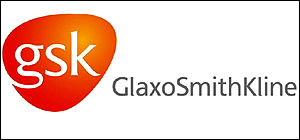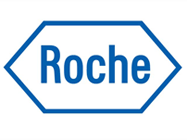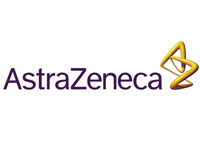 GlaxoSmithKline plc is a British based pharmaceutical, biological, and healthcare company. GSK is a research-based company with a wide portfolio of pharmaceutical products covering anti-infectives, central nervous system (CNS), respiratory, gastro-intestinal/metabolic, oncology, and vaccines products. It also has a Consumer Healthcare operation comprising leading oral healthcare products, nutritional drinks, and over the counter (OTC) medicines.
GlaxoSmithKline plc is a British based pharmaceutical, biological, and healthcare company. GSK is a research-based company with a wide portfolio of pharmaceutical products covering anti-infectives, central nervous system (CNS), respiratory, gastro-intestinal/metabolic, oncology, and vaccines products. It also has a Consumer Healthcare operation comprising leading oral healthcare products, nutritional drinks, and over the counter (OTC) medicines.
History
In 1880,
Burroughs Wellcome & Company was founded in London by American pharmacists
Henry Wellcome and
Silas Burroughs. Wellcome Tropical Researches Laboratories was opened in 1902. McDougall & Robertson Inc. was bought by the Wellcome Company to be more active in animal health. Also, the production center was moved from New York to
North Carolina in 1970 and the following year another research center was built.
Glaxo was founded in
Bunnythorpe,
New Zealand. Originally a baby food manufacturer processing local milk into an early baby food by the same name, which was sold in the 1930s under the slogan "Glaxo builds bonny babies". Still visible on the main street of Bunnythorpe is a derelict dairy factory (factory for drying and processing cows' milk into powder) with the original Glaxo logo clearly visible, but nothing to indicate that this was the start of a major multinational.
Glaxo became Glaxo Laboratories, and opened new units in London in 1935.
Glaxo Laboratories bought two companies called Joseph Nathan and
Allen & Hanburys in 1947 and 1958 respectively. After it bought
Meyer Laboratories, it started to play an important role in the US market. In 1983 the American arm Glaxo Inc. moved to Research Triangle Park (US headquarters/research) and Zebulon (US manufacturing) in North Carolina. To be stronger in the medicine market, Burroughs Wellcome and Glaxo, Inc merged in 1995.
The new name of the company was GlaxoWellcome. In the same year, GlaxoWellcome opened their Medicine Research Centre in England. Three years later GlaxoWellcome bought Polfa Poznan Company in Poland.
In 1843, Thomas Beecham launched his
Beecham's Pills laxative in England. Beecham opened its first factory in
St Helens,
Lancashire, England for rapid production of medicines in 1859. By the 1960s it was extensively involved in pharmaceuticals.
In 1830, John K. Smith opened its first pharmacy in Philadelphia. Over the years Smith, Kline and Company favorably amalgamated with the French, Richard and Company because of their successful management decisions. It changed its name to Smith Kline & French Laboratories to focus more on research in 1929.
Years later, Smith Kline & French Laboratories opened a new laboratory in Philadelphia; furthermore, it bought a laboratory called Norden Laboratories which was doing research into animal health to benefit their research in various other areas.
To move on this path, Smith Kline & French Laboratories bought
Recherche et Industrie Thérapeutiques (
Belgium) in
1963 to focus on vaccines. The company also wanted to spread globally to capture shares in various medicine markets. Because of this, Smith Kline & French Laboratories bought 7 more laboratories in Canada and US six years later. In 1982, it bought Allergan which was making products about eye and skin. It also merged with Beckman Inc. After this merge, it changed its name to SmithKline Beckman.
In 1988, SmithKline Beckman bought its biggest competitor, International Clinical Laboratories, and enlarged by 50%. The next year, Beecham and SmithKline Beckman became one and changed the name of the company to SmithKline Beecham plc. The headquarters of the company were then moved to England. To improve the R&D in US, SmithKline Beecham bought a new research center in 1995. Yet another new research center was opened in New Frontiers Science Park two years later.
In 2000, Glaxo Wellcome and SmithKline Beecham merged to form GlaxoSmithKline.
As the second largest pharmaceutical company in the world (after
Pfizer), the company had sales of £23.2 billion and made a profit of £7.8 billion in 2006. It employs around 110,000 people worldwide, including over 40,000 in sales and marketing.
Its global headquarters are GSK House in Brentford, London, United Kingdom, with its United States headquarters based in Philadelphia and its consumer products division based in the Pittsburgh suburb of Moon Township, Pennsylvania. The research and development division has major headquarters in South East England, Philadelphia and Research Triangle Park (RTP) in North Carolina.
The company is listed on the London and New York stock exchanges. The majority of its activity is in the United States, although the company has a presence in almost 70 countries.
In 2006, pharmaceutical sales accounted for £20.08 billion (or 87%) of GSK's total sales. Sales are based around a broad range of products with the most successful (starting with highest sales) being:
For many years now GSK has been a leading contributor to a multinational government and industry alliance to rid the world of
lymphatic filariasis (
elephantiasis). LF threatens over one billion people in 83 countries. Approximately 120 million people are infected with the parasites, 40 million of whom have clinical symptoms of the disease. The Global Alliance to Eliminate LF was formed with the support of the pharmaceutical companies GlaxoSmithKline and
Merck to help countries with LF respond. GSK has donated over 440 million
albendazole tablets to date, which serve as a cornerstone of the program.
Jean-Pierre (JP) Garnier, CEO of GlaxoSmithKline added, “The
Egyptian data shows that we can now eliminate a disease that has plagued the world for centuries. We remain committed to donating as much albendazole as required to eliminate this disabling disease, but ultimate success will depend on continued long-term commitments by all partners across the globe.”
In addition Glaxo has been short-listed for awards such as The Worldaware Business Award for its work to eliminate malaria in Kenya.
GlaxoSmithKline recently donated money to the British flood appeal.
Global locationsConsumer Products headquarters in
Moon Township,
Pennsylvania suburb of
PittsburghMajor
R&D sites in
Greenford, United Kingdom;
Stevenage, United Kingdom;
Harlow, United Kingdom;
Ware, United Kingdom;
Beckenham, United Kingdom;
Verona, Italy;
Zagreb, Croatia;
Evreux, France;
Research Triangle Park, North Carolina; and Upper Merion and Collegeville, Pennsylvania
Major manufacturing sites for prescription products in
Ware, United Kingdom;
Evreux, France;
Montrose, United Kingdom;
Barnard Castle, United Kingdom;
Crawley, United Kingdom;
Bristol,
Tennessee;
King of Prussia,
Pennsylvania;
Zebulon,
North Carolina;
Cidra,
Puerto Rico; Jurong
Singapore and
Cork Ireland;
Parma, Italy.
GSK has a presence in over 72 countries
Most of the biological part of GSK in
Belgium (
Wavre and
Rixensart)
Corporate governanceOn October 8, 2007 it was announced that Dr Garnier would be succeeded as Chief Executive by Mr
Andrew Witty. Mr Witty, 43, will take up the position at the end of May 2008 and is expected to join the Board in due time.
David Stout, president of Pharmaceuticals operations, and Chris Viehbacher, president of the US Pharmaceuticals division, who lost out to Mr Witty in the succession race, might possibly quit the company. However it was reported in the UK press on 5 December that both executives would receive retention packages worth £2m in the form of shares over the next 2 to 3 years plus a small amount of cash to stay at GlaxoSmithKline.
On December 7, 2007, it was announced that Andrew Witty, CEO Designate, and Chris Viehbacher, President US Pharmaceuticals, have been appointed Executive Directors and will join the Board of the Company with effect from January 31, 2008. It was also announced that Daivd Stout will leave the company in February 2008.
Diversity
GlaxoSmithKline was named one of the 100 Best Companies for Working Mothers in 2007 by
Working Mothers magazine and was recognized by the International Charter for its efforts. GSK also received a perfect score of 100 percent from the
Human Rights Campaign Foundation's 2005
Corporate Equality Index, an annual report card of corporate America's treatment of gay, lesbian, bisexual, and transgender (GLBT) employees, customers and investors. GSK also supports employee diversity networks for groups such as ECN, PTPN, GLBT, AAA, etc.
ControversyParoxetine (Seroxat, Paxil) is an
SSRI antidepressant released in 1992 by GlaxoSmithKline. In March 2004 the FDA ordered a black box warning placed on SSRI and other antidepressants, warning of the risk for potential suicidal thinking in children and adolescents. Since the FDA approved paroxetine in 1992, approximately 5,000 U.S. citizens have sued GSK. On January 29 2007, the
BBC in the UK broadcast a fourth documentary in its 'Panorama' series about Seroxat.
One clinical trial indicated that adolescents were six times more likely to become suicidal after taking it.
In March 2006,
California Attorney General Bill Lockyer announced that "GlaxoSmithKline (GSK) will pay $14 million to resolve allegations that state-government programs paid inflated prices for the firm’s anti-depressant drug Paxil because GSK engaged in patent fraud, antitrust violations and frivolous litigation to maintain a monopoly and block generic versions from entering the market."
At the
AGM on
19 May 2003, GSK shareholders rejected a motion regarding a £22 million pay and benefits package for CEO, JP Garnier. This was the first time such a rebellion by shareholders against a major British company has occurred, but was regarded as a possible turning point against other so-called "
fat cat" deals within executive pay structure.
On
September 7,
2005, the ALF detonated a bomb containing two litres of fuel and four pounds of explosives on the doorstop of the
Buckinghamshire home of Paul Blackburn, GSK's corporate controller, causing minor damage.
In
November 2005, AIDS Healthcare Foundation accused the company of boosting its short-term monopoly profit by not increasing production of the anti-
AIDS drug
AZT despite a surge in demand, hence creating a shortage that affected many AIDS patients in Africa. GSK announced that it had halted clinical trials of the CCR5 entry inhibitor, aplaviroc (GW873140), in HIV-infected, treatment-naive patients because of concerns about severe hepatotoxicity.
In June of 2006 GSK said it was further cutting, by about 30%, the not-for-profit prices it charges for some of these medicines in the world's poorest countries.
LegalIn 2003 GSK signed a corporate integrity agreement and paid $88 million in a civil fine for overcharging
Medicaid for the antidepressant
Paxil, and nasal-allergy spray
Flonase. Later that year GSK also ran afoul of the
Internal Revenue Service (IRS) and was facing a demand for $7.8 billion in backdated taxes and interest, the highest in IRS history.
On
September 12,
2006 GSK settled the largest tax dispute in IRS history agreeing to pay $3.1 billion. At issue in the case were Zantac and the other Glaxo Group heritage products sold from 1989–2005.
The case was about an area of taxation dealing with intracompany "transfer pricing"—determining the share of profit attributable to the US subsidiaries of GSK and subject to tax by the IRS. Taxes for large multi-divisional companies are paid to revenue authorities based on the profits reported in particular tax jurisdictions, so how profits were allocated among various legacy Glaxo divisions based on the functions they performed was central to the dispute in this case.
On
December 22,
2006, a US court decided in Hoorman, et al. v. SmithKline Beecham Corp that individuals who purchased
Paxil(R) or Paxil CR(TM) (
paroxetine) for a minor child may be eligible for benefits under a $63.8 million Proposed Settlement.
The lawsuit won the argument that GSK promoted Paxil(R) or Paxil CR(TM) for prescription to children and adolescents while withholding and concealing material information about the medication's safety and effectiveness for minors.
The lawsuit stemmed from a consumer advocate protest against Paroxetine manufacturer GSK. Since the FDA approved paroxetine in 1992, approximately 5,000 U.S. citizens – and thousands more worldwide – have sued GSK. Most of these people feel they were not sufficiently warned in advance of the drug's side effects and addictive properties.
According to the Paxil Protest website,
http://www.paxilprotest.com/, hundreds more lawsuits have been filed against GSK. The Paxil Protest website was launched August 8, 2005 to offer both information about the protest and information on Paxil previously unavailable to the public. Just three weeks after its launch, the site received more than a quarter of a million hits.
The original Paxil Protest website was removed from the internet in 2006. It is understood that the action to take down the site was undertaken as part of a confidentiality agreement or 'gagging order' which the owner of the site entered into as part of a settlement of his action against GlaxoSmithKline.
(However, in March 2007, the website Seroxat Secrets discovered that an archive of Paxil Protest site was still available on the internet via Archive.org) Gagging orders are common in such cases and can extend to documents that defendants wish to remain hidden from the public. However in some cases, such documents can become public at a later date, such as those made public by Dr. Peter Breggin in February of 2006.
In January 2007, according to the Seroxat Secrets website,
[15] the national group litigation in the United Kingdom, on behalf of several hundred people who allege withdrawal reactions through their use of the drug Seroxat, against GlaxoSmithKline plc, moved a step closer to the High Court in London, with the confirmation that Public Funding had been reinstated following a decision by the Public Interest Appeal Panel.
The issue at the heart of this particular action claims Seroxat is a defective drug in that it has a propensity to cause a withdrawal reaction. Hugh James Solicitors have confirmed this news.
In February 2007, the Serious Fraud Office in the UK launched an investigation into allegations of GSK being involved in the discredited oil-for-food sanctions regime in Iraq. They are accused of paying bribes to Saddam Hussein's regime.
On March 13, 2007, in a bid to reduce the risk of breast cancer, GSK introduced in the United States market
lapatinib, a tyrosine kinase inhibitor for oral use. GSK is also working to make lapatinib available in European and other global markets.
On March 27, 2007, GSK pleaded guilty in an Auckland District Court to 15 charges relating to misleading conduct brought against them under the Fair Trading Act by New Zealand's Commerce Commission.
The charges related to a popular
blackcurrant fruit drink
Ribena which the company had lead consumers to believe contained high levels of
vitamin C. As part of a school science project, two 14-year-old school girls (Anna Devathasan and Jenny Suo) from
Pakuranga College in
Auckland (
New Zealand) discovered that ready-to-drink juice sold in 100ml containers contained very little vitamin C. Approaches by the two teens to the company didn't resolve the issue but after the matter was publicised on a national consumer affairs television show (
Fair Go) the matter came to the attention of the Commerce Commission (a government funded 'consumer watch-dog'). The commission's testing found that ready-to-drink Ribena contained no detectable vitamin C.
company was fined $217,000 for the 15 charges. The number of charges was reduced from 88 and covered a period from March 2002 to March 2006. GSK maintains that it did not intend to mislead consumers and that the advertising claims were based on testing procedures that have since been changed.
It was ordered to run an advertising campaign to provide the facts after it admitted misleading the public about the vitamin C component in its Ribena drink.
Through its lawyer, Adam Ross, the company accepted Commerce Commission allegations that claims that ready-to-drink Ribena contained 7mg of vitamin C per 100ml, or 44 per cent of the recommended daily intake, were incorrect. The company also agreed television advertising claiming the blackcurrants in Ribena had four times the vitamin C of oranges, while literally true, were likely to mislead consumers about the relative levels of vitamin C in Ribena.
read more»
Read more...
 Eli Lilly and Company (NYSE: LLY) is a global pharmaceutical company and one of the world's largest corporations. Eli Lilly's global headquarters is located in Indianapolis, Indiana, in the United States. The company was founded in 1876 by a pharmaceutical chemist, Eli Lilly, after whom the company was ultimately named.
Eli Lilly and Company (NYSE: LLY) is a global pharmaceutical company and one of the world's largest corporations. Eli Lilly's global headquarters is located in Indianapolis, Indiana, in the United States. The company was founded in 1876 by a pharmaceutical chemist, Eli Lilly, after whom the company was ultimately named. 

















